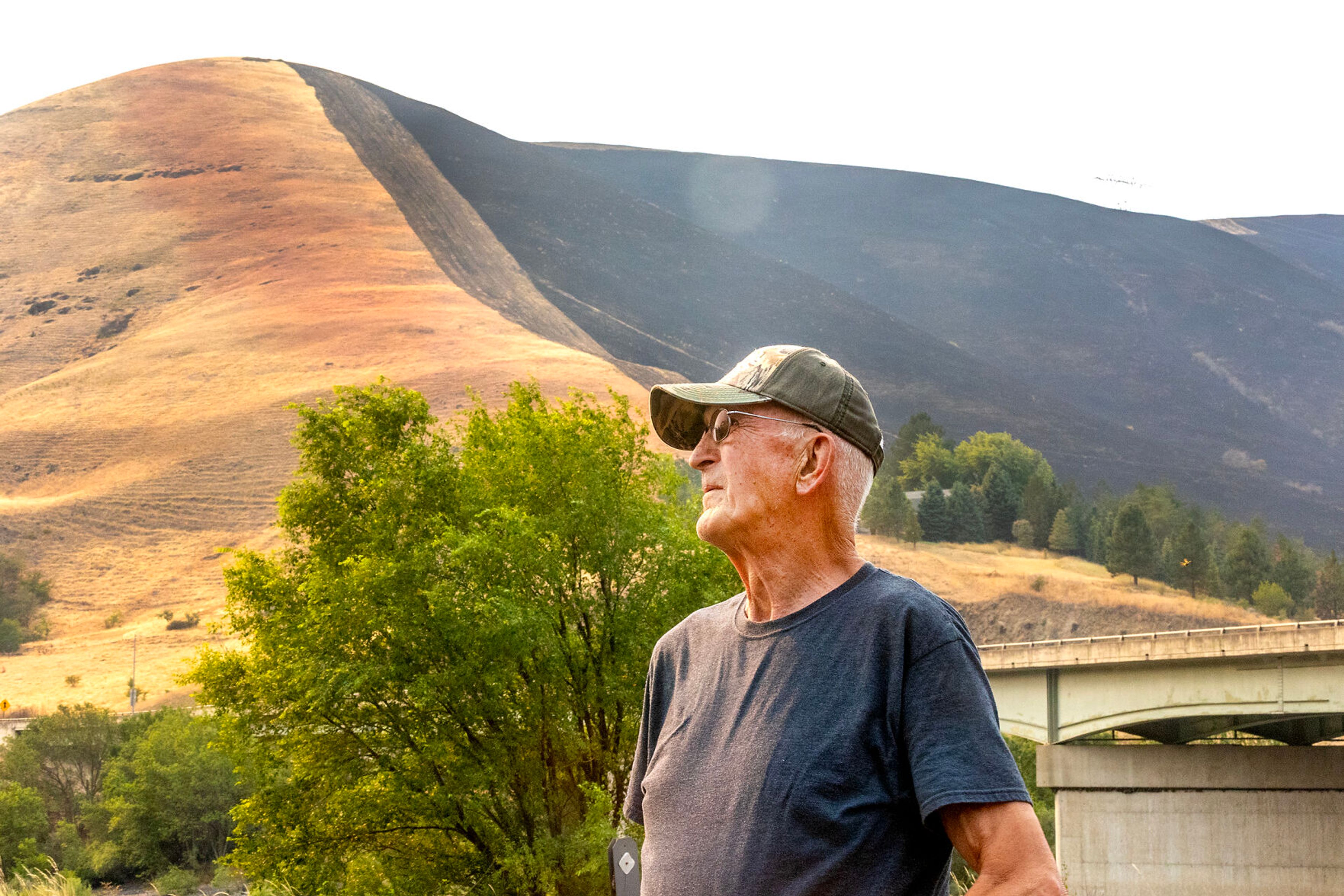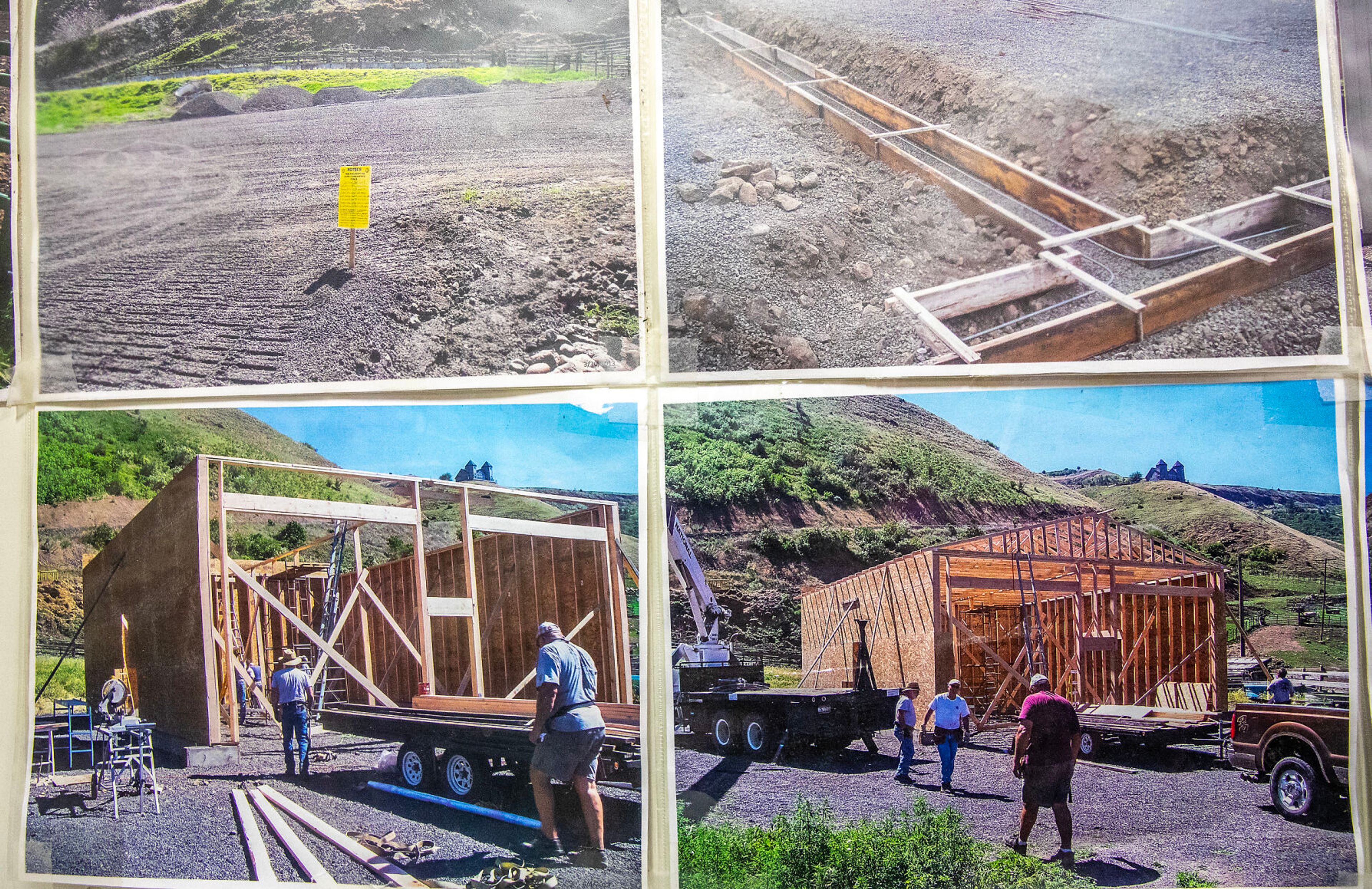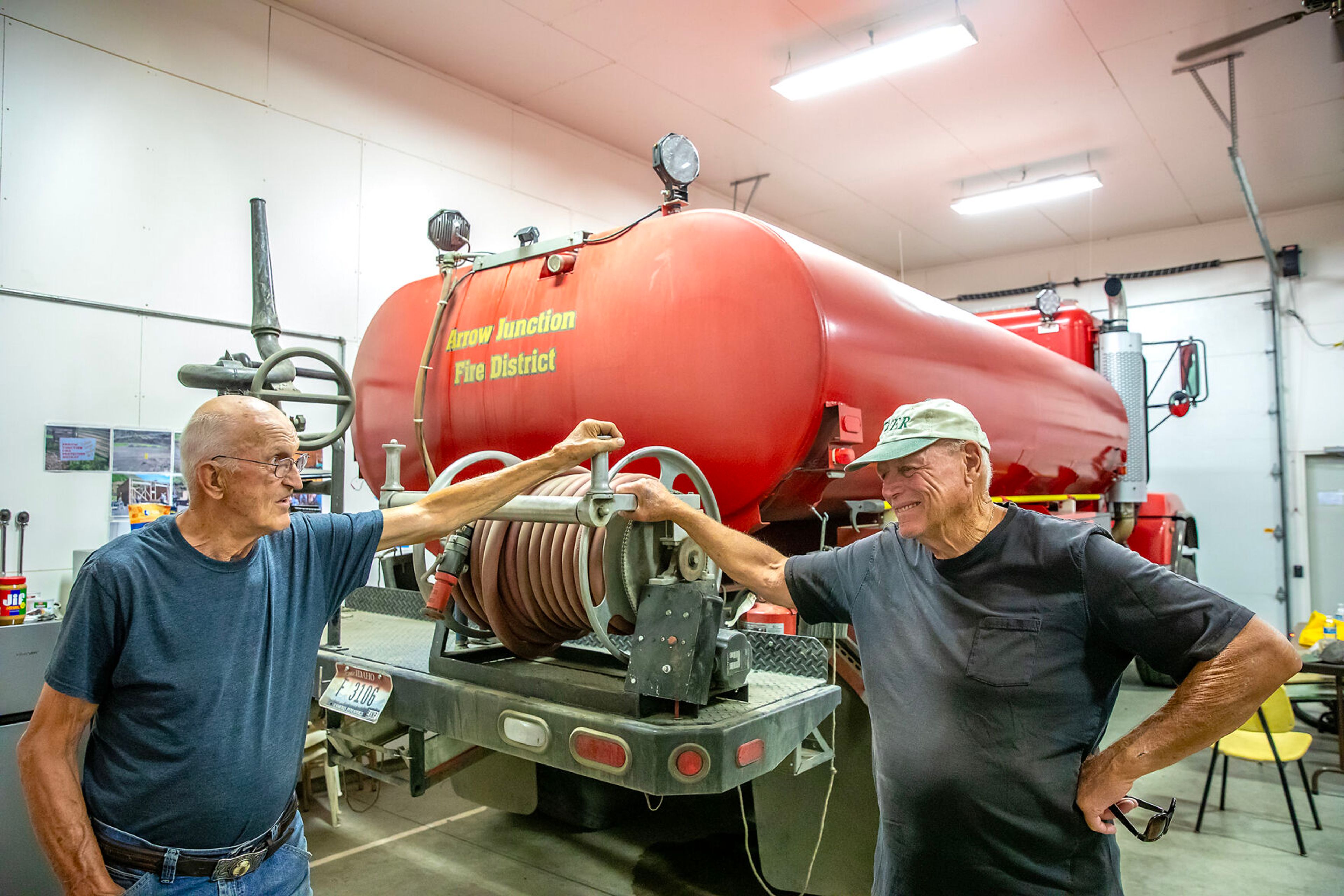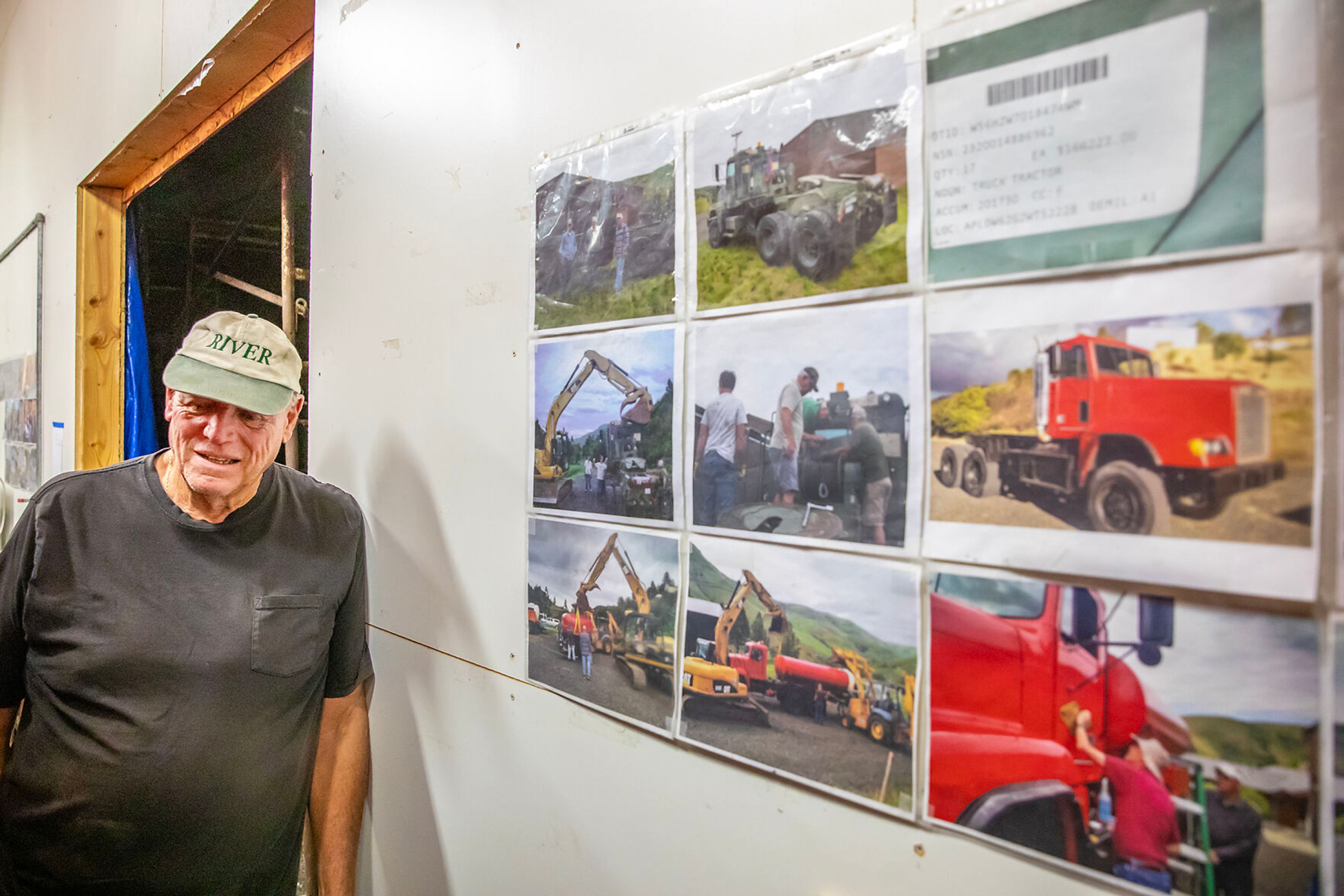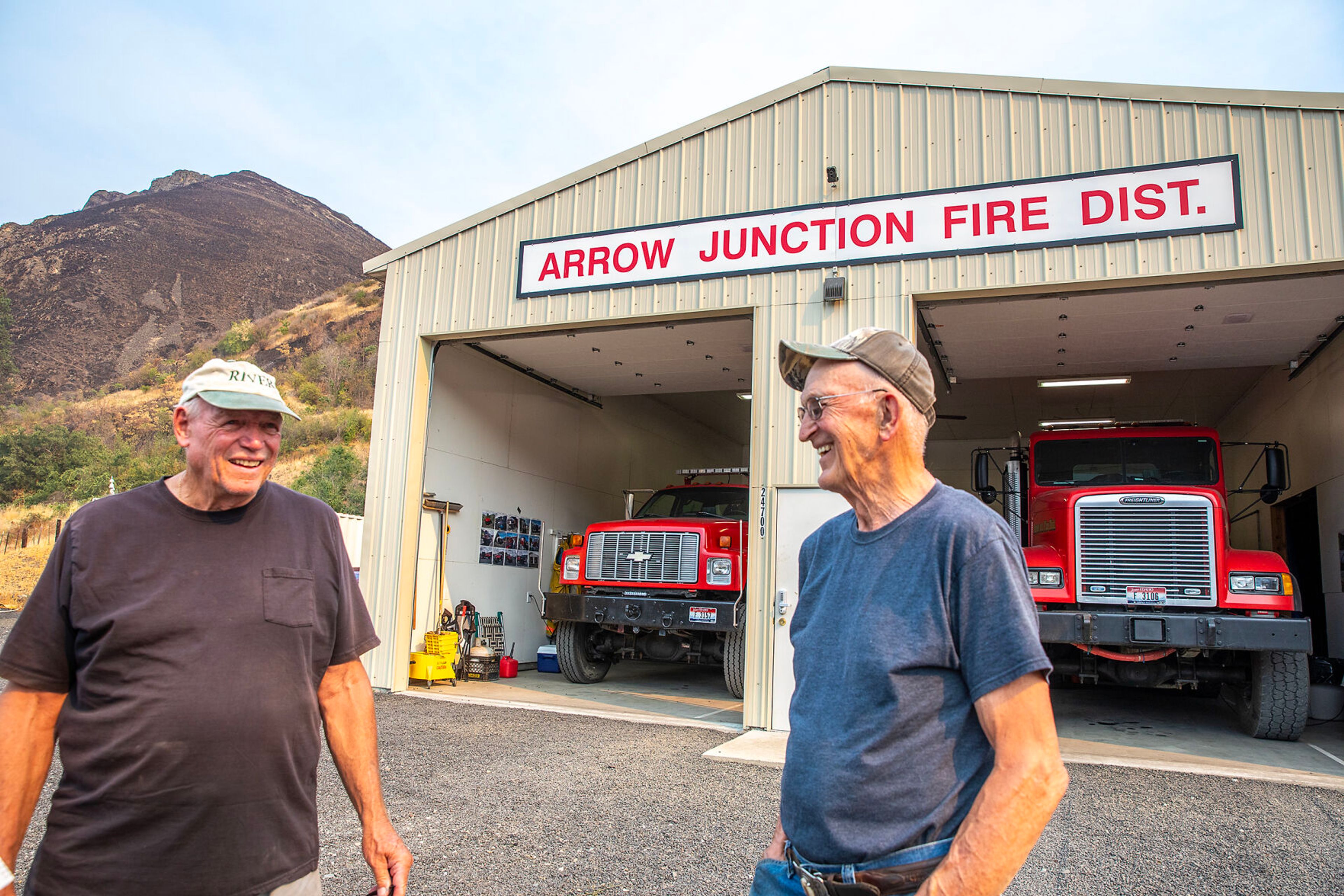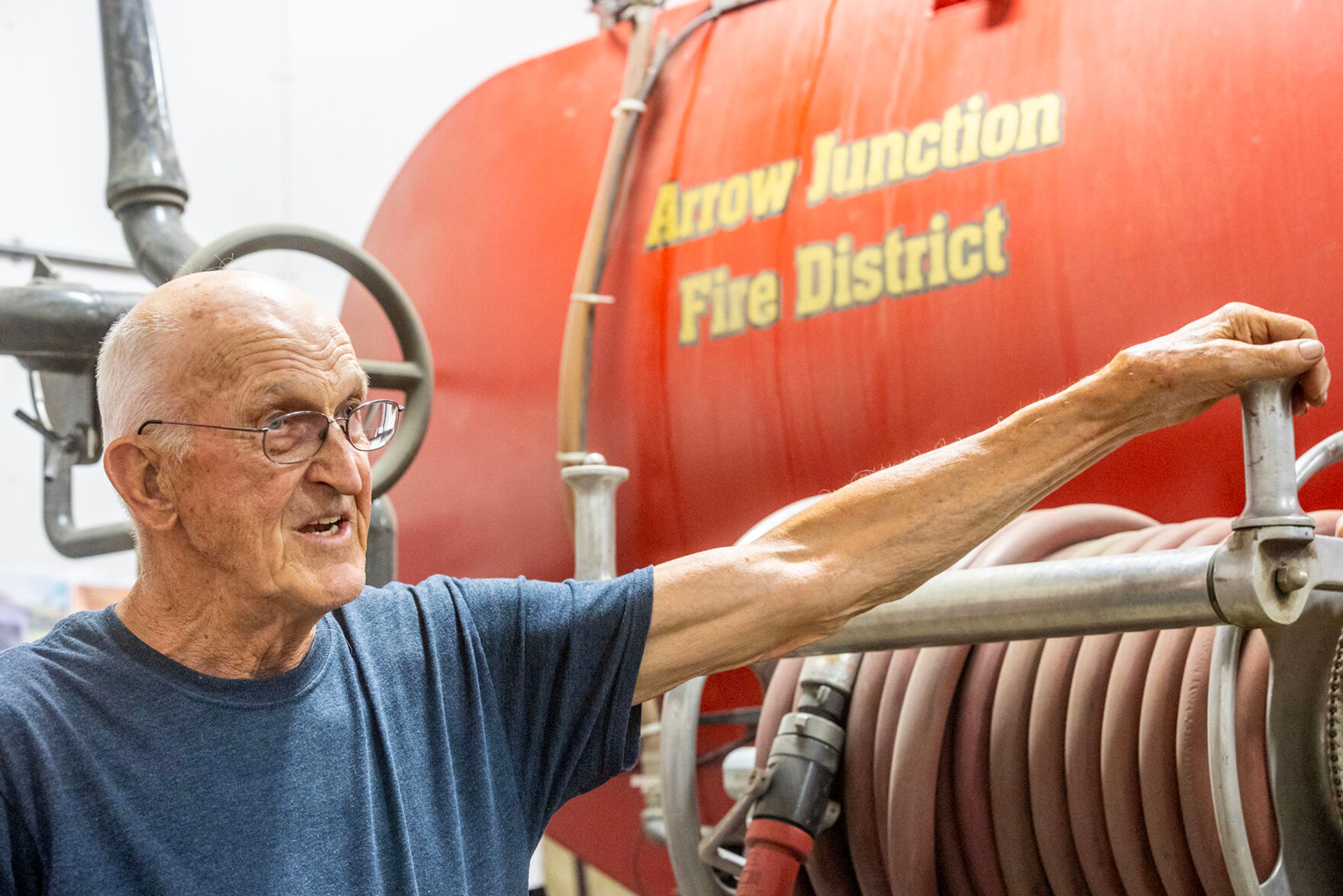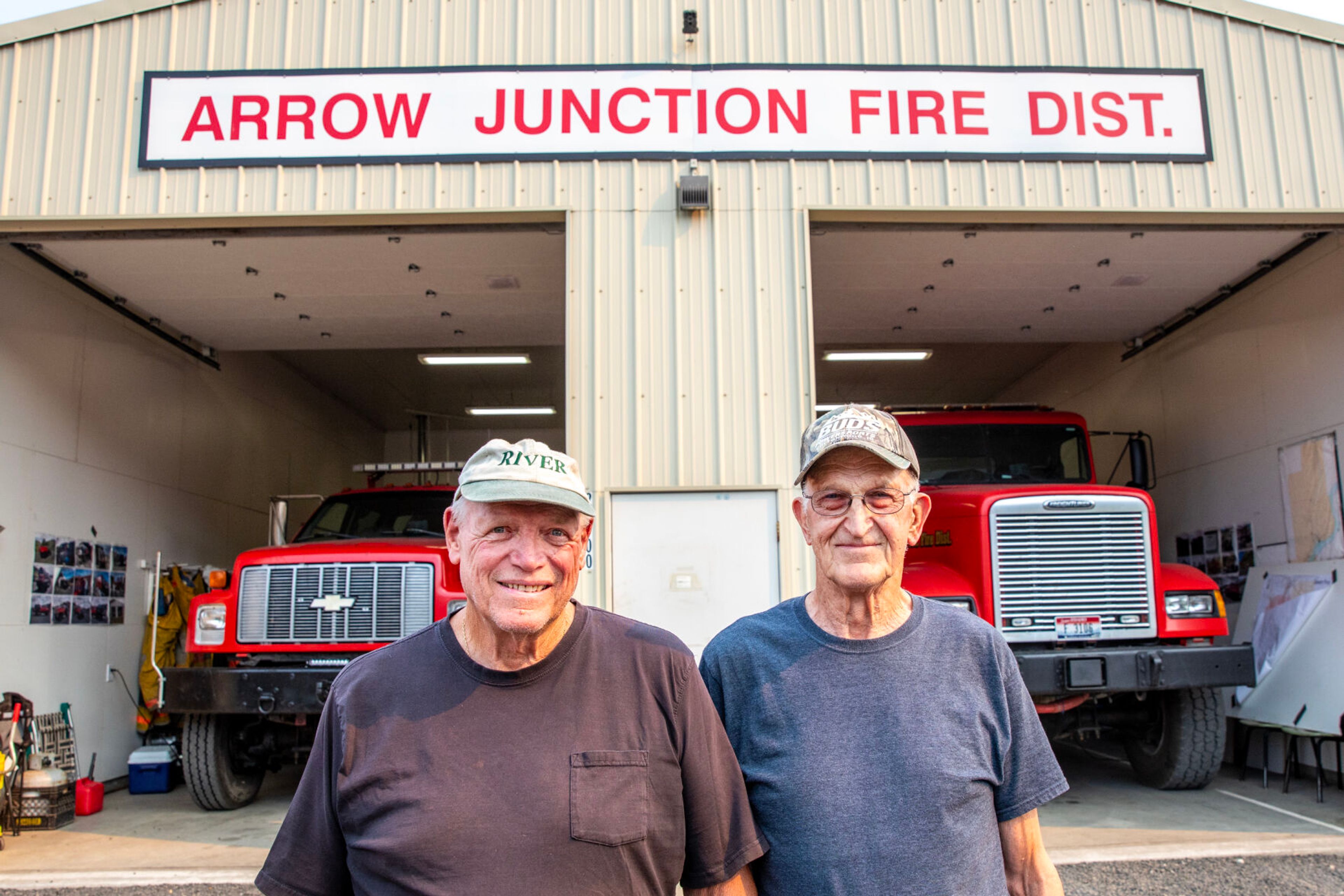Small but mighty
Rural volunteer fire districts answer the call when wildfires roar
They are small — tiny really — but for many rural residents, they are the first line of defense against fast spreading flames.
Rural fire districts act as initial attack crews on wildfires within their territories. They are run entirely by volunteers and their budgets, if you can call them that, are shockingly modest.
“It’s a pissant district in a lot of ways,” said LuVerne Grussing of the Arrow Junction Fire Protection District east of Lewiston. “Our annual budget is about $8,300. But if you come out and look at the equipment we have been able to get through government surplus and convert it to fire equipment, it’s pretty impressive. We have a million dollars and more in fire equipment.”
The 2,400-acre district that stretches roughly from the Spalding Railroad Bridge across the Clearwater River to the Arrow Bridge on U.S. Highway 12 was at the center of the Gwen Fire when it blew up July 25.
The volunteers worked long, hot and grueling hours doing their best to protect the homes in the district and a handful of homes owned by people who live just outside its boundary but subscribe to their service. They were mostly successful.
One home in the district burned, a subscriber’s home was lost and Colter’s Creek Winery that is in the district was destroyed.
But dozens of others are still standing.
“They saved our houses, I can tell you that,” said Mike Pearson, who owns Colter’s Creek Winery with his wife Melissa Sandborn and volunteers for the district. “And really, I’d say at least four houses were in the direct line of fire and if it hadn’t been for Arrow Junction, they would have been gone.”
Grussing credits firefighting efforts from other agencies, especially water and retardant drops from planes and helicopters, with contributing to their success.
“It certainly wasn’t us alone but we did manage to protect everything within our district pretty darn well.”
There are about 16 people who are trained to fight fires for the district and many more who help in other ways such as bookkeeping and organizing. Gene Wightman, 83, is the fire chief. He retired from what was then the Poltach Pulp and Paper Mill where he worked in maintenance. At the district, he used that knowledge to convert military trucks to pump trucks.
“He’s a damn genius when it comes to putting stuff like this together,” Grussing said.
The two of them worked about 40 hours straight during the first few days of the Gwen Fire.
“We started at 5:30 a.m. Thursday (July 25) and never never got to bed until 11 o’clock Friday night,” Wightman said.
The two said the district formed about a decade ago, when a fire on the north side of the Clearwater River burned one home and threatened more. Since then they have scrapped together equipment and built a firehouse.
“I’ve become pretty good at working the surplus system through the state Department of Lands. They have been so good to us in getting us the equipment we’ve got. All the equipment we use regularly is stuff we have acquired through military surplus. We are protecting a lot of pretty expensive property and we do it on less than a shoestring.”
Chad Sanford can relate. He is chief of the Blue Mountain Fire District at Anatone. It has a $17,000 a year budget but members have built a firefighting apparatus through grants and acquisition of surplus equipment from government agencies.
“We have five brush trucks, two tenders and a dozer and a command trailer we acquired over the years,” he said. “We have just slowly built over time.”
Last fall, the district used a grant to build its first firehouse and now has a central place to store equipment, meet and train. The district, which only fights wildfires, serves as initial attack for the Washington Department of Natural Resources in the area and patrols about 100,000 acres. Sanford said crews from the district were the first to respond on the Cougar Creek Fire.
Its members are mostly farmers and ranchers, who have long come to the aid of neighbors when fires pop up. Organizing into a fire district allowed them to increase safety and reduce liability. Before they organized, if someone was hurt while fighting fires for a neighbor, it’s possible their insurance company could sew the property owner.
“With the district, the liability comes off of the property owner,” Sandford said.
It also led to formal training and the acquisition of critical safety equipment, including something as simple as radios.
“Before it was just gunny sacks and buckets and you just went,” he said. “Now we have radios, and trucks. Safety-wise it’s better. You can know where guys are. Before, once they were over the hill out of shouting distance, that was it.”
The state retains ownership of much of the equipment but the district is tasked with maintaining it. Sanford there are 40 volunteers on the roster and a core group of about a dozen people who do much of the work. Many of them also donate their equipment like water trucks, tractors and discs when a fire pops up.
Sanford credits district secretary Susie Appleford for making it all work.
“If it wasn’t for her we wouldn’t be where we are today,” he said. “She is the main reason we have an organized fire district and why we have a building now. We might do the leg work but she is the one that pushed us over the edge to do it.”
Barker may be contacted at ebarker@lmtribune.com or at (208) 848-2273. Follow him on Twitter @ezebarker.w
How to help
A GoFundMe account has been started to help the Arrow Junction Fire District. It has raised about $4,500, just shy of its goal of $5,000.
gofundme.com/f/support-arrow-junction-fire-heroes
